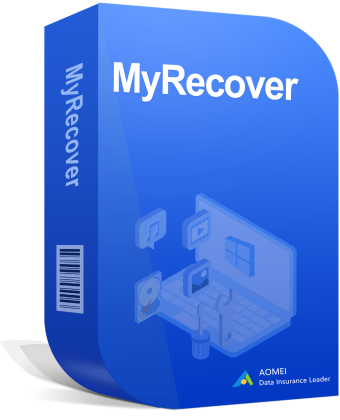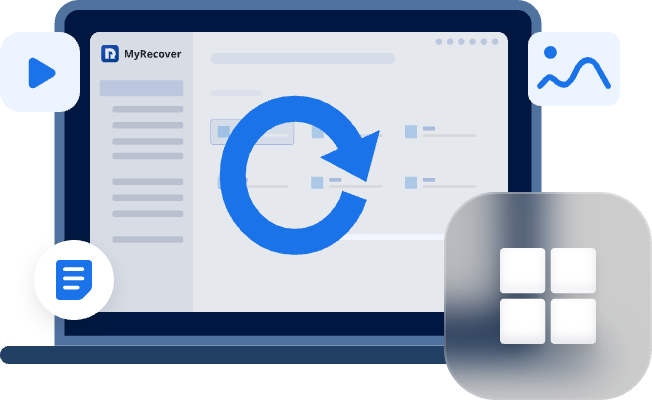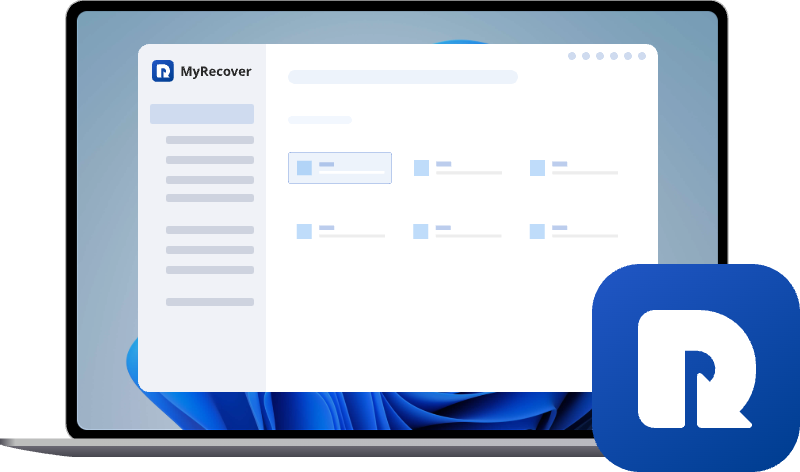Fixed: LaCie Hard Drive Flashing But Not Showing Up (Mac & Windows)
If your LaCie hard drive is flashing but not showing up, it may be due to power issues, corrupted file systems, outdated drivers, or hardware problems. This article walks you through practical troubleshooting steps for Windows and Mac, helping you identify the cause and get your LaCie external drive recognized again without losing data.
User Query
My LaCie hard drive is flashing but not showing up when I plug it into my Windows 11 PC, so I can’t back up my files. Can you please help?
Why Is My LaCie Hard Drive Light Blinking but Not Showing Up?
LaCie is a well-known brand that produces high-quality external hard drives often used for backups, photo and video storage, and professional creative work. These drives are popular for their durability, fast transfer speeds, and sleek design. They connect easily via USB-C or USB 3.0 ports and usually show a steady or blinking light when powered on.
However, sometimes users notice that the LaCie hard drive light is blinking but the drive does not appear on the computer—a common issue that can occur on both Windows and macOS systems.Why? Major reasons include:
🧿Loose or Faulty USB Connection
🧿Insufficient Power Supply
🧿Drive Not Mounted or Assigned a Letter
🧿Outdated or Corrupted Drivers
🧿Corrupted File System or Partition Errors
🧿Hardware Failure
How to Fix LaCie Hard Drive Flashing But Not Showing Up on Mac and Windows?
As mentioned earlier, this issue can happen on both Windows and Mac due to connection errors, power supply issues, driver problems, or file system corruption. The good news is — in most cases, you can fix it with a few simple troubleshooting steps. Below are the most effective solutions for both Mac and Windows users, explained step-by-step.
- Note:✎...
- If the light blinks continuously but the drive makes clicking noises or isn’t spinning, the hardware might be failing. In this case, contact LaCie Support or a data recovery service before attempting repairs.
Solution 1: Check the Connection and Cable
A loose, faulty, or incompatible USB cable is one of the most common reasons your LaCie hard drive flashes but doesn’t appear.
Step 1. Unplug the LaCie drive from your Windows or Mac computer.
Step 2. Inspect the USB cable for damage or looseness.
Step 3. Try connecting the drive to a different USB port on your computer.
Step 4. Use another USB-C or USB 3.0 cable, preferably the original LaCie one.
Step 5. Test the drive on a different computer to check if it’s recognized.
If the drive appears on another device, your cable or USB port is the problem. Replace or reconnect accordingly.
Solution 2: Ensure Sufficient Power Supply
Some LaCie models (especially desktop drives) need more power than a laptop USB port can provide. Connect the drive directly to your computer’s main USB port (not through a hub).
If you’re using a LaCie desktop drive, plug in its external power adapter. Avoid connecting multiple power-hungry devices to the same hub. If the drive powers on and stops blinking continuously, it means the issue was related to power insufficiency.
Solution 3: Mount and Assign A Drive Letter to the LaCie Hard Drive
Your LaCie drive might be detected but not shown in File Explorer or Finder because it’s unmounted or missing a drive letter.
For Windows:
Step 1. Press "Win+R" simultaneously → choose "Disk Management".
Step 2. Find your LaCie drive in the list and check its status.
- If it shows "Not Initialized", right-click→ select "Initialize Disk" → choose "MBR" or "GPT".
- If it shows "Unallocated Space", right-click on the unallocated space and select "New Simple Volume...". Follow the wizard.
- If it appears without a drive letter, right-click → select "Change Drive Letter and Paths" → "Add" → choose a letter.
For Mac:
Step 1. Open Disk Utility (Applications > Utilities).
Step 2. Check if your LaCie drive is listed in the left panel.
Step 3. If it’s greyed out, select it and click "Mount".
Solution 4: Format the LaCie Drive to A Proper File System for Your OS
If your LaCie hard drive is flashing but not showing up, it might be using an incompatible or corrupted file system. For example, a drive formatted for macOS (APFS or HFS+) won’t appear properly in Windows, and NTFS-formatted drives might show as read-only or unmountable on Mac. Reformatting the drive to a compatible file system often restores full functionality.
For Windows
Step 1. Open Disk Management, right click the LaCie Drive and choose "Format".
Step 2. Choose a file system such as NTFS (for Windows-only use) or exFAT (for both Windows and Mac compatibility).
Step 3. Wait for completion. Once the process finishes, reopen File Explorer to check if the drive appears.
For Mac
Step 1. Open Disk Utilityand select Your LaCie Drive.
Step 2. From the sidebar, choose the external drive (not the partition).Click"Erase" and choose a suitable format:
Step 3. Wait for the Process to Finish and check if the drive mounts automatically in Finder.
Solution 5: Update or Reinstall the Driver
Outdated or corrupted drivers can stop Windows from recognizing your LaCie hard drive.In this case, you can update or reinstall it.
For Windows
Step 1. Press "Windows + X"→ select "Device Manager".
Step 2. Expand Disk drives and locate your LaCie drive.
Step 3. Right-click it → choose "Update driver "→ Search automatically for drivers.
If that doesn’t help, right-click again → Uninstall device, then restart your computer.
Windows reinstalls the correct driver automatically, and your LaCie drive should reappear.
For Mac
On a Mac, you usually don't need to manually update drivers for your disks. macOS takes care of this automatically for most drives.
Your first step should always be to check for macOS software updates. This is how Apple delivers driver improvements for built-in and common external drives.
If your disk still isn't working properly after updating macOS—which can happen with some specific external drives—then check the manufacturer's website for a Mac driver or firmware tool.
Solution 6: Repair Disk Errors or File System Corruption
A corrupted file system can make the LaCie hard drive flashing but not showing up. Thus, you need to make a check and repair it if necessary.
For Windows:
Step 1. Press "Windows + X"→ select "Command Prompt (Admin)" to open Command Prompt as Administrator.
Step 2. Type: chkdsk X: /f/ r (Replace “X” with your LaCie drive letter.)
Step 3. Press Enter and let Windows scan and fix errors.
For Mac:
Step 1. Open Disk Utility.
Step 2. Select your LaCie drive → click "First Aid"→ "Run".
Recover Lost Data After Fixing the LaCie Hard Drive Flashing But Not Showing Up Issue
During the process of fixing the LaCie hard drive flashing but not showing up problem, certain actions—such as formatting, initializing the disk, or repartitioning—can accidentally erase your data. If you’ve lost important files, don’t worry. With the right data recovery software like MyRecover, you can often retrieve most or all of your data even after formatting or disk errorson Windows computer.

- 💖Recover 1000+ File Types – Restore photos, videos, documents, emails, music, and more.
- 💖Quick Recovery in 500+ Data Loss Cases – Recover files lost from deletion, formatting, crashes, malware, or partition issues.
- 💖Supports 500+ Devices – Works with HDDs, SSDs, USBs, memory cards, cameras, consoles, drones, and more.
- 💖Wide System Compatibility – Compatible with all popular Windows PCs and Servers.
- 💖AI-Empowered Recovery – Uses AI and deep scanning to find even the hardest-to-recover files.
Step 1. Install and launch MyRecover on your computer.
Step 2. Select the target LaCie hard drive and click "Scan" to search for all recoverable files.
Step 3. Filter what you need by file size, type or directly choose the file type in the left sidebar.
Step 4. Tick what you need and click "Recover".
Step 5. Choose a destination drive and wait for the process to be done.
To recover files from Mac after troubleshooting the LaCie hard drive recognition issue, you can also make use of third-party software.
To Conclude
In summary, a blinking light on a LaCie drive that doesn't appear typically stems from connection, power, or mounting issues. Begin by checking cables and power supply. Then, use Disk Management (Windows) or Disk Utility (Mac) to mount the drive or assign a letter. If these fail, repairing disk errors or reformatting may be necessary.
If you experience data loss during troubleshooting, a comprehensive tool like MyRecover can help restore your files. It supports recovery from a wide range of file systems, including NTFS, FAT, exFAT, and even Ext4 and ReFS partitions data recovery.


